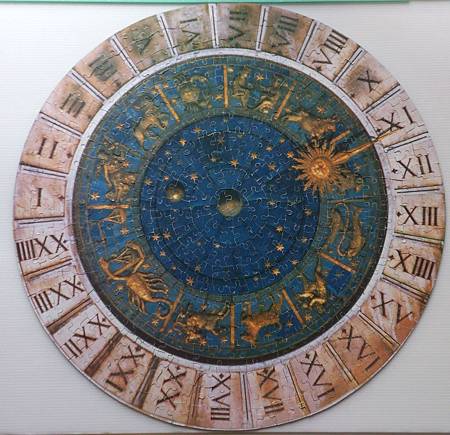Past Times, Oxford England
Made in England
Double Sided Clock Jigsaw
Using the concept of time to predict when planting and reaping should take place was necessary for the survival of Neolithic harmers of c25,000 BC. Archaeologists believe that the stone circles at Avebury and Stonehenge functioned as 'calendars', marking the position of the sun, moon and stars at vital times of the year.
The advent of trading necessitated a more accurate time measurement and the earliest known 'clocks' were those of the Egyptians. Cleopatra's Needle in London is a fine example of gnomon or shadow stick, which indicates the hours of the day by casting a shadow across a marked surface.
The first mechanical clocks appreared in the medieval period and the word 'clock' is derived from the French choche, or bell. Made out of iron by blacksmiths and driven by weights, these early clocks had no dials, but struck bells to denote divine offices. Minute hands were not introduced until the 17th century, when timepieces became more accurate.












 留言列表
留言列表
 A.K.A.
A.K.A. 